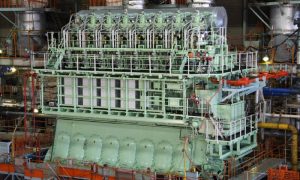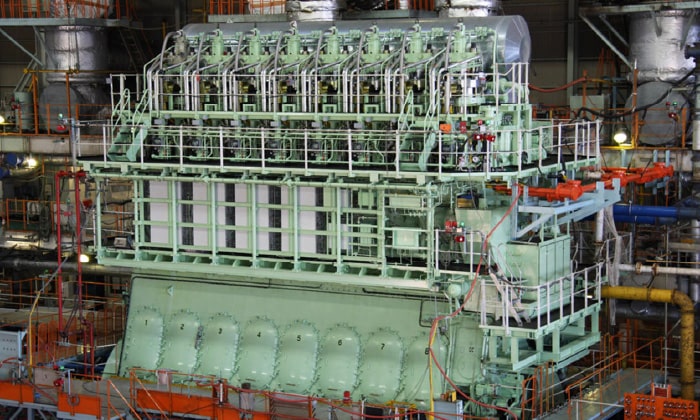The power and corresponding torque transmitted to the crankshaft by each cylinder of a reciprocating engine varies throughout its cycle. The torque is greatest during the expansion stroke and least during compression, and this is repeated from each cylinder in turn. The varying cyclic torques tend to cause torsional vibrations in the engine and propeller shafting. The frequency of any peak torque can be found as: number of engine cylinders x number of cycles per unit time.
These vibrations are normally damped and their energy dissipated by the elasticity of mechanical parts, oil films at bearings, and the work absorbed at the propeller. An engine system, including all the shafting, working parts, bearings, propeller etc., is manufactured from metal parts which have natural elasticity. There will be a natural frequency for the whole system at which it will tend to vibrate if caused to do so.
Should the frequency of peak torques from the running engine coincide with, or be a multiple of, the natural frequency for the system, a condition of resonance is set up. Resonance may cause unacceptable torsional vibrations and consequent stresses to be induced. Engine speeds at which this can occur are termed critical speeds.
To prevent the buildup of these high stresses, engines must not be run continuously at, or close to, critical speeds. Warning of any critical speed within the operating range of the engine must be given. Remote speed control systems must be programmed to avoid operating the engine at critical speeds.

FAQ
1. What causes torsional vibrations in reciprocating engines?
Torsional vibrations arise due to the cyclic variation in torque delivered by each cylinder, with peak torque occurring during the expansion stroke and minimal torque during compression. These variations create periodic excitations that can lead to vibrations in the crankshaft and connected systems.
2. How is the frequency of peak torque calculated?
The frequency of peak torque is determined by:
Frequency=Number of cylinders×Cycles per unit time (e.g., RPM/60 for Hz)
3. What is a critical speed?
Critical speeds are engine RPM ranges where the frequency of peak torque coincides with (or is a harmonic of) the system’s natural frequency, leading to resonance. This can cause excessive vibrations and mechanical stress.
4. How are torsional vibrations damped in engines?
Damping occurs through:
- Elasticity of metal components (crankshaft, couplings).
- Oil film damping in bearings.
- Energy absorption by the propeller and other loads.
5. Why must engines avoid prolonged operation at critical speeds?
Resonance at critical speeds can induce high stress, leading to premature wear, fatigue failure, or catastrophic damage to shafts, gears, or propellers.
6. How do modern engines mitigate torsional vibrations?
- Torsional dampers/vibration absorbers (e.g., viscous or tuned-mass dampers).
- Electronic controls that limit dwell time near critical speeds.
- Flexible couplings to decouple vibration paths.
–
References
- Diesel Engines, Third Edition (Step-By-Step) 3rd edition by WHARTON
-
Heywood, J. B. (2018). Internal Combustion Engine Fundamentals (2nd ed.). McGraw-Hill.
-
Taylor, C. F. (1985). The Internal Combustion Engine in Theory and Practice (Vol. 1 & 2). MIT Press.
-
International Organization for Standardization. (2010). *ISO 3046-5: Reciprocating internal combustion engines – Performance – Part 5: Torsional vibrations*.
-
Wilson, W. K. (1956). Practical Solution of Torsional Vibration Problems. Chapman & Hall.

